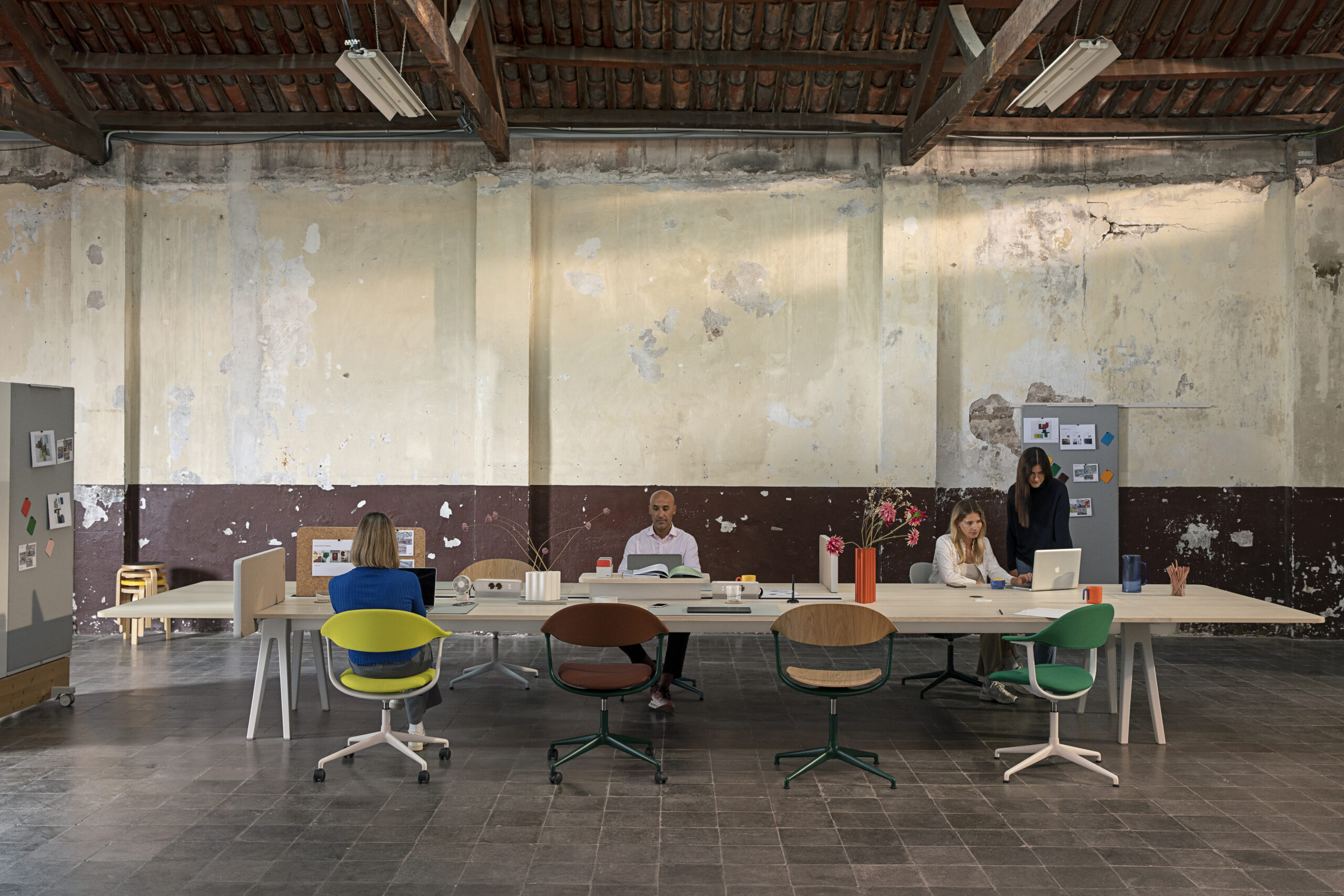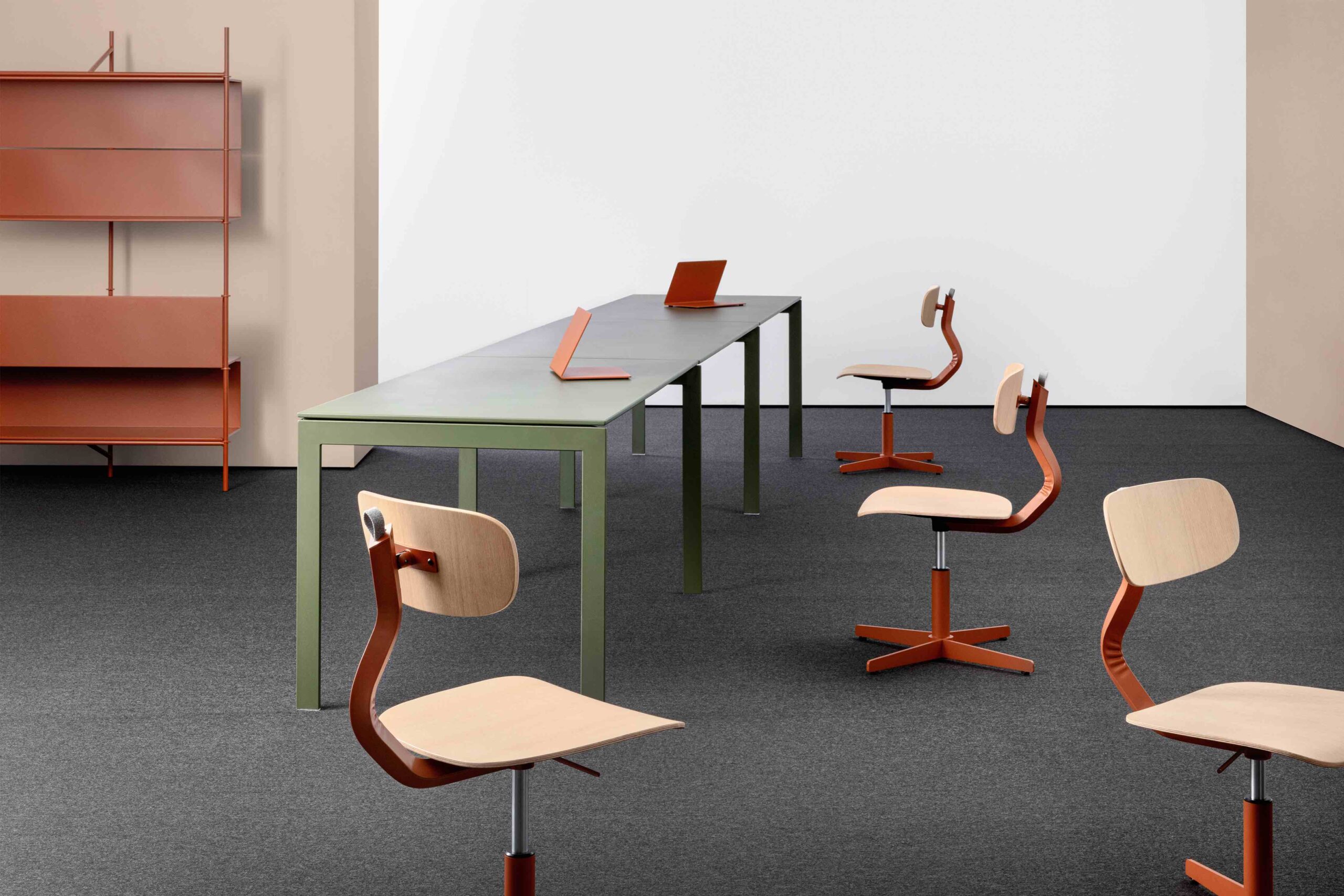 Humanscale’s QuickStand desk aims to encourage workers to stand up more|||
Humanscale’s QuickStand desk aims to encourage workers to stand up more|||
Modern office workers spend about half of their waking hours in their workspace, that is more than ever before. While there are still plenty of jobs out there that require heaps of physical activity, the majority of us whose work is office-based spend more time than ever sitting down, most likely looking up at the bright blue lights of a computer screen – and we’re getting bigger for it.
While the conversation about healthy workplaces has shifted dramatically over the past few years, it is still a fact that most of us are not moving nearly as much as we should through the course of the workday. There are many reasons for this. Part of it is the work that we are doing, sitting at computers; but another part of it is to do with the way we think of work and design our workspaces. “It’s been 40 years since the desktop computer appeared,” says Paul Matthews, an active workplace specialist from Office Fitness Ltd. “That’s when the obesity crisis started.”
Though of course the rise in obesity among office workers is more complex an issue that cannot – and should not – be oversimplified. However, it is undeniable that as the place where most adults spend the majority of their waking hours, what we do or don’t do in our workplaces can be vital for our health and well-being. Well-being is also a key issue in employee retention, according to recent research, which means that giving health some serious thought has never been more important.
Now experts are suggesting that so-called ‘low activity’ is the key to encourage office workers to move around more while at work. The key to this culture change might simple: standing up. “When you sleep, you’re burning 59 calories an hour. When you sit, it’s 60 calories. So when you’re sitting down you might as well be sleeping,” says Matthews. “When you stand up, you’re up about 80 to 90 calories there. You can tell that by people with a heart rate monitor on. Just by the fact of standing up, your heart rate goes up ten beats. Low activity, despite the name, is meaningful because it tries to capture the lost activities of everyday movement which were once so prevalent but have now leached away in the modern day quest for ease and convenience.”
Fitness experts at Office Fitness, purveyors of fitness-led office equipment, are suggesting that the government and companies should aim to get their office workforce to do low activity for 300 minutes – 5 hours – a day. This equates to around 150 minutes of moderate or 75 minutes of vigorous activity. “There’s all sorts of benefits there, not only for employees’ individual health but for the employer as well in terms or productivity, it sort of improves morale to move,” adds Matthew.
Talk of standing up in the office is not new. Standing desks have been commercially available for some years, and have even evolved into more physically demanding walking desks, but what Matthews is suggesting is radical in that it’s vastly more challenging than any guidance out there; research published the British Journal of Sports Medicine in 2015 suggests standing for two hours spread out across a typical working day, less than half what Matthews and his team are suggesting, the Mayo Clinic suggests we get up for 10 minutes out of every hour.
The top-down approach to promoting standing and low activity in the workplace is actually the key for Matthews. That’s because we all know the guidance, we just don’t follow it, but if employers were to invest in equipment and mandate targets for employees to follow, then culture change would ensue. “Standing desks and treadmills are part of the armoury to achieving the goal with top-down, design lead approach playing a massive part,” he says.
Thoughtful workplace design and furnishing is a huge part of that, and it’s up to decision-makers to invest in their employees’ wellbeing. Humanscale, one of the first companies to roll-out standing desks, and who pioneered the sit/stand model – where employees can easily raise or lower their workstation according to their need – suggest that alternating between sitting and standing postures is good for our waistlines, too. A 2009 Mayo Clinic study finding that it was possible to burn an additional 340 calories per day by standing up for just two hours.
For Matthews, that’s just the start. There is no reason why entire offices shouldn’t have standing as the default working option with seating as the alternate mode. In 2013, Office Fitness kitted out a ‘standing room only’ office in London, and he envisions a day when workplaces fitted with standing desks or standing meeting rooms are the norm, like they are in parts of Scandinavia. “Standing desks and treadmills are part of the armoury to achieving the goal with top-down, design lead approach playing a massive part.”
Subscribe to OnOffice newsletter to get wellness in the workplace content delivered straight to your inbox.
There’s a new call for office workers to stand up for up to five hours a day. But will all the standing around help make us healthier?























